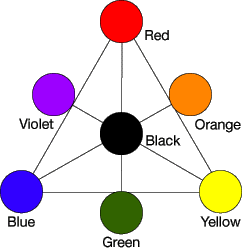Choosing the Right Hair Color and Product
Choosing a new hair color isn't as simple as finding a color you like on a box in the drugstore. You need to make this choice based on an analysis of your natural hair color, eye color and skin tone. First, let's review the basic "laws" of color. Color, as we see it, is actually the reflection of light off of the colored pigments in the hair shaft. It's sort of like the color prisms you saw in elementary school: it fractured light into distinctive colors you could see. This is what happens with hair color except that you're adding or subtracting colors to change from one color to another or to change the undertones.
A shade of color is made up of different combinations of reflections off the pigments. That's why hair color -- both natural and dyed -- looks different under fluorescent lights and in natural sunlight. Color levels are the degrees of lightness or darkness of a color seen by the eye. Hair color is assigned a level number from 1 to 10, with 10 being the lightest and 1 being black. Black reflects very little light and the lightest shades of blonde reflect the greatest amount of light. A colorist would say that a level 10 blonde is two steps lighter than a level 8 blonde.
Advertisement
Look at a color wheel or chart: Suppose you want to lighten your hair color. When hair is lightened, it produces warm, or yellow-red, undertones. Remember from school that mixing yellow and red produces orange -- not generally the desired hair color! Refer to the wheel to cancel out some of the orange tone but leave enough to keep the warm tones. The best hair colors for you if you have warm skin undertones (ivory, peachy, golden brown, creamy beige, cafe au lait, tawny, coppery, deep golden brown) and blue, blue-green hazel, green, topaz, amber or coffeebean colored eyes, are golden with red highlights, golden brown, honey brown, chestnut, copper and mahogany. Cool tones are blue-red. If your skin has rosy pink, rosy beige, dark olive, dark brown or ebony tones and your eyes are light blue, gray-blue, deep blue, deep green, brown or black, your best hair color options are plum and burgundy highlights, ash and platinum blonde, brown, dark brown, black, slate, salt and pepper and pure white.
Experts say you also can't miss if you return your hair to its color when you were 12 years old.
Your choice of hair coloring product depends on what you're trying to accomplish and how long you want your color to last. Most women start with a lower commitment level and move up to a higher level over time. If you're seeing more gray or your hair coloring isn't covering gray as well as it did, you might need to move to a higher-level product. Level 3 is the only kind of product that can completely and permanently cover any amount of gray.
The all-important strand test (always explained in home coloring packages) will ensure that you've chosen the right color -- and product -- and will give you a chance to change your mind. It works like this:
- Mix one teaspoon of color and one teaspoon of developer (peroxide) in a glass bowl.
- Apply the mixture to the roots or ends to determine the outcome. You can protect the test strand from the other hair by wrapping a piece of tin foil around the strand and securing it with a clip.
- Time the process according to package directions, then rinse and dry the strand.
- Look at it in different types of light to see if you like it.
